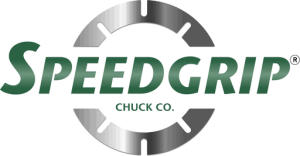I encourage our customers to take full advantage of our design experience. In the course of a year, a typical manufacturing engineer will see at most a handful of new parts. Our designers will see that same number of parts in an average week, and we have the added advantage of being exposed to manufacturing processes across the entire spectrum of industry: automotive, off road equipment, medical, military, aircraft, HVAC, oil drilling, mining, aerospace, consumer products, electronics. . .and on and on. . .
With a new application, my first task is information gathering. I need complete machine, part and process information. I need to know as much as possible about the process the customer is planning for production. No detail is too insignificant to mention. I have spent many hours developing a solution for a customer only to be informed after I have a completed design, some small but crucial detail that was left out, that changes the whole direction that we must approach the project from. Examples of common variables are part material, hardness, depth of cut, surface finish required, geometric and dimensional tolerances which must be held. Also, machine features, drawbar/drawtube thread, cylinder size, and the available air or hydraulic pressure. How is the part to be loaded? What is the desired cycle time? What is the annual production quantity? Is the budget such that an off the shelf solution is required, or can we optimize the solution with a custom designed mechanism?
I then begin mentally comparing the requirements of this application to the tens of thousands of designs we have done in the past. In our engineering department we have in excess of 150 years of workholding design experience. We also have a computerized nomenclature system in which we have categorized most of the designs developed over more than 60 years of business into 24 different methods of actuation, 36 different families of workholding types, and 37 different special feature options that a chuck might have. By entering the relevant variables, we are able to query thousands of past designs to come up with reference projects which serve as the starting point for a new project.
Relatively often, we are given applications that don’t easily fit into past design parameters. Our customers are continually pushing the limits and expecting more from their workholding mechanisms. Customers frequently desire to increase feed rates and speeds, achieve greater accuracy, combine operations, eliminate operations, and incorporate new materials. Our team of engineers are continually pushing the boundaries of what is possible.
As a customer I encourage you to give us as much freedom as possible to solve your workholding problem. You may have used jaw chucks, or collet chucks, or diaphragm chucks for many years, and feel very comfortable with them, but there may be other mechanisms that offer advantages that you may be unfamiliar with. Give us as much information as you can about your process, and see what we come up with.
The more communication there is on a project between the designer and user, the greater the chance of success. We can be a valuable partner for manufacturing engineers across virtually every industry. Partner with us, and let us help you improve your efficiency, quality, and safety. We welcome a challenge!
David A. Stokely
Chief Designer – Speedgrip Chuck Company
